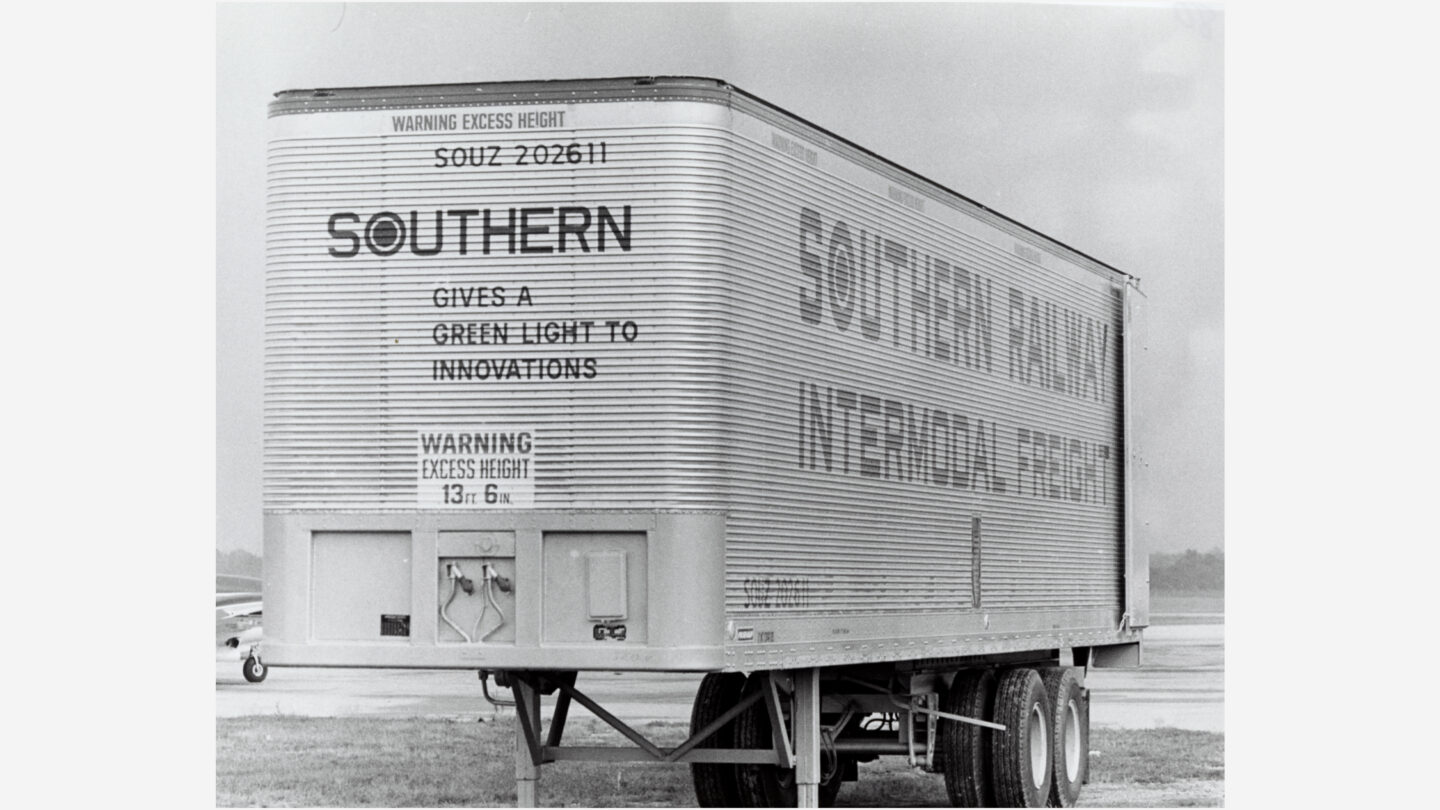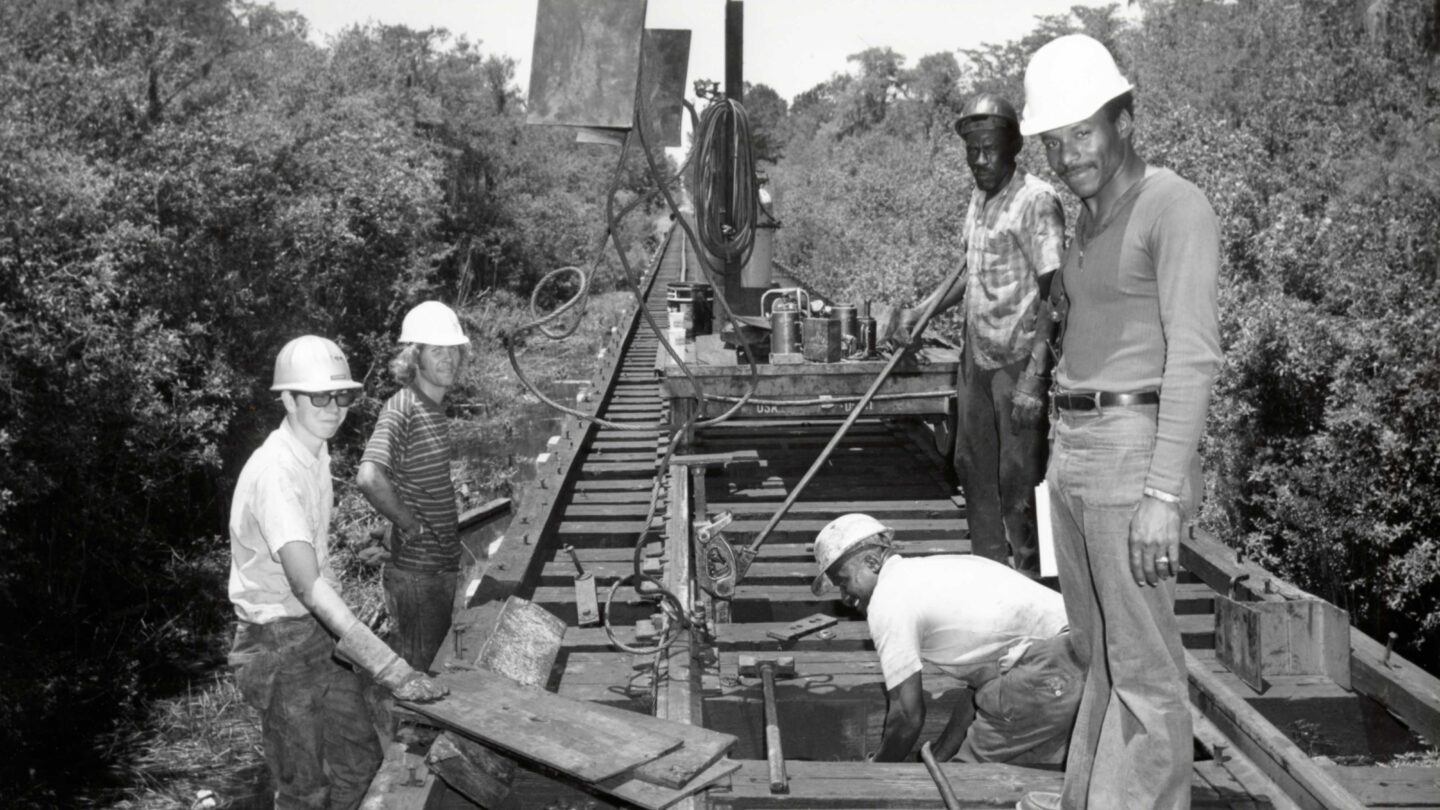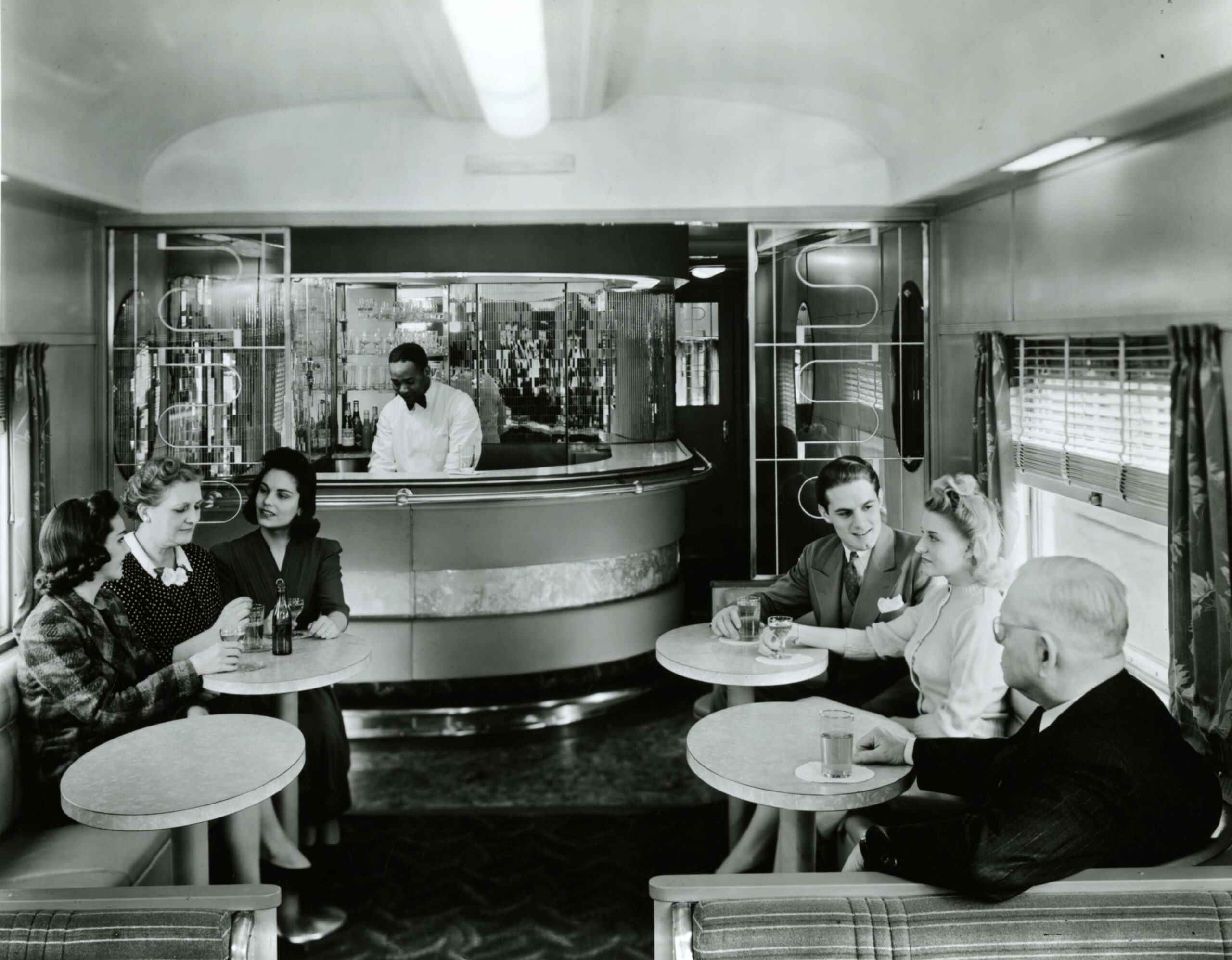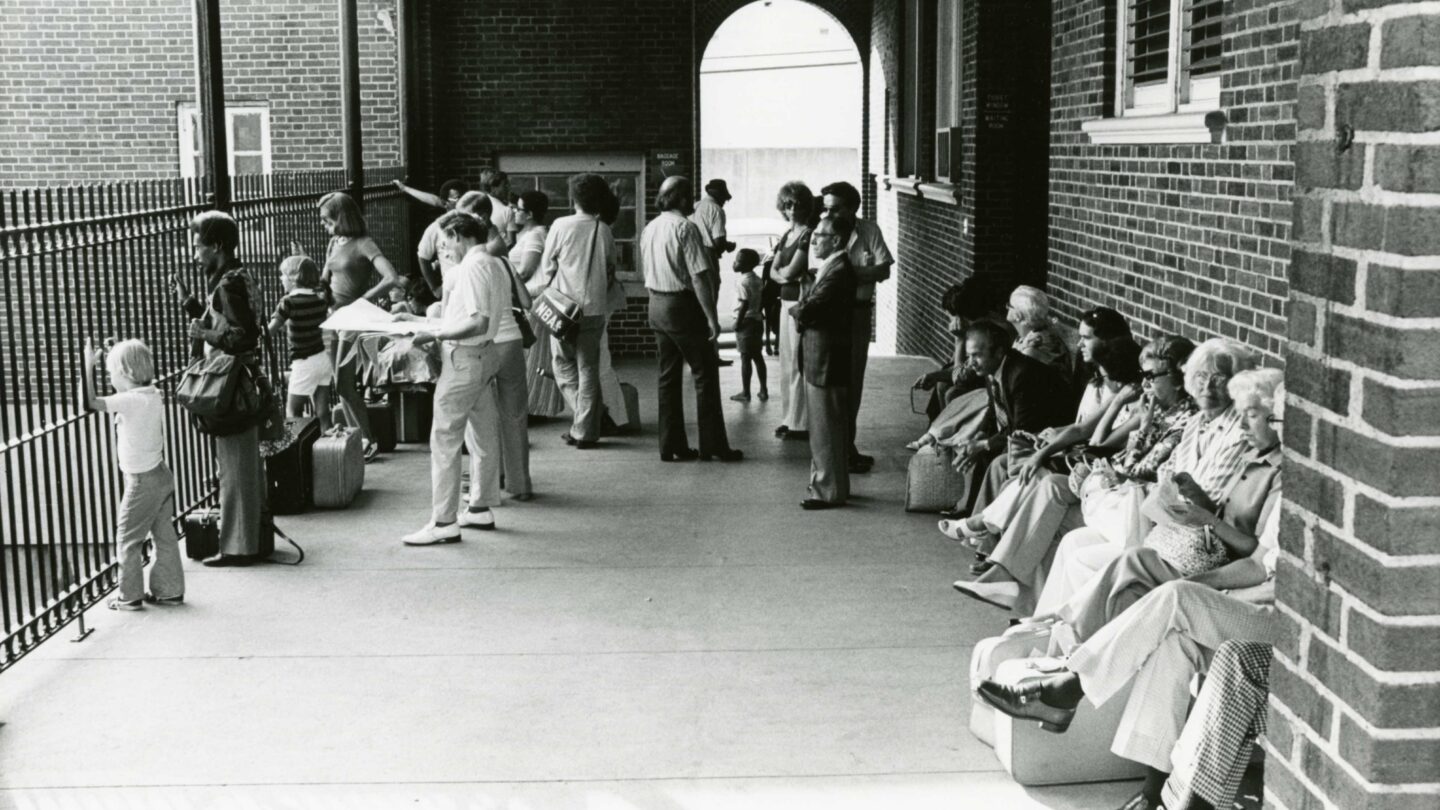
Southern Railway invested heavily in intermodal freight, which combined the efficiency of rail transportation with the flexibility of trucking. Benefits from this highly efficient system were many, including lower costs of transportation and energy conservation.
On October 25, the Atlanta History Center received a significant collection of railroad archival materials from one of Atlanta’s newest corporate citizens, Norfolk Southern Corporation.
Norfolk Southern, which relocated its headquarters from Norfolk, Virginia, to Atlanta in November, is a freight railroad which operates a 19,300-mile railroad network across 22 states and Washington D.C.
The gift to our Kenan Research Center includes an extensive collection of corporate records from Norfolk Southern predecessor Southern Railway and its 200 forerunner companies, including roughly 20,000 photographs.
Norfolk Southern also donated $500,000 to support the archiving, processing, and digitization of the archival collection, $50,000 of which will go towards hiring archival interns from underrepresented communities, over the next five years.

A Southern Railway bridge crew pauses for the camera while at work on a trestle in Louisiana during the 1970s. This photo, taken on the former New Orleans & Northeastern Railroad line which runs from New Orleans to Meridian, Mississippi, reflects the dedication of the men and women who make railroading a profession. The pay scales and benefits are good, but being a railroader means that the work is often physically challenging, outside in the elements, and sometimes in very remote locations.
“The materials in this collection are incredible and help us to further tell the story of Atlanta and the Southeast,” says Sheffield Hale, president and CEO of Atlanta History Center. “These records can help us understand the many people who built the railroads, those who worked on the day-to-day operations, and the people and businesses who relied on the railroads.”
Southern Railway, organized and financed by J.P. Morgan beginning in 1894 and led by Georgian Samuel Spencer, recruited textile mills and other industry to the South, supported Georgia’s agriculture industry, brought the materials which built our growing city, and served a “Who’s Who” of Atlanta shippers like The Coca-Cola Company.
The documents in the gift date from the earliest days of railroad history in the United States. The collection includes the records of the South Carolina Canal & Rail Road Company, which operated the first scheduled passenger train service anywhere in the U.S. on December 25, 1830. It also includes materials from the first railroad chartered in the state of Georgia, the Central Railroad and Canal Company of Georgia, founded in 1833. Both railroads ultimately became part of the Southern Railway.
Atlanta was literally the crossroads of the Southern and was located at the center of its large network of main lines, which stretched out from Washington, DC to Jacksonville, and from Cincinnati to New Orleans.
The photos are especially rich because of their continuity over time. The photos run the gamut from Civil War-era photos, through scenes of the passenger train era and the shift from steam to diesel locomotives, to pictures of the piggyback trains (in which truck trailers are carried on railroad flatcars) which eventually helped to create Norfolk Southern’s modern intermodal operations. Many of the Southern Railway images were used in the company’s in-house publications, like the Southern Railway News Bulletin and later, Ties magazine.

From 1894 to 1979, Southern Railway passenger trains connected cities and towns in the Southeast to other parts of the country. This 1941 publicity photo features a scene in a brand new tavern-lounge observation car used on the famous Washington, DC to Memphis train the Tennessean. During this time, many railroad employees working aboard passenger trains were African American, although the trains were segregated in the Southeast. Cars like this one were places for some travelers to relax and visit with fellow passengers while riding the train.
During the Civil War, railroads were critical to both the United States and Confederate war efforts. Atlanta was a key strategic position as a transportation hub, therefore making it one of the last dominos to fall and ensuring the ultimate victory of the United States forces over the Confederacy.
After the Civil War, railroad builder John Thrasher bought and developed land located north of the city, along the proposed route of the Atlanta & Richmond Air-Line Railway. He named the new town after a former Atlanta Mayor, one of the organizers of that railroad, Jonathan Norcross. And as for the Atlanta & Richmond Air-Line Railway, it became the Southern Railway’s main line and remains a very active route.
Long before there was an airport, the fine passenger trains of Southern Railway predecessor Richmond & Danville Railroad connected Atlantans to the business centers of the Northeast. Southern’s trains were also there for Atlanta during World War II, when over 10,000 people per day passed through Atlanta’s old Terminal Station. In fact, Southern Railway’s military traffic during World War II was on an epic scale. For instance, it operated nearly 16,000 troop trains carrying over six million service people during the period 1941-1945.
During the 1960s, just after the population of Atlanta exceeded 1 million for the first time, Southern Railway doubled down on both its railroad and the future of Atlanta. One of the most innovative railroads in the country, it chose to use technology to manage its freight capacity. At a time when other railroads were still using telegraph keys, Southern invested in microwave telecommunications and mainframe computers to run its railroad. The nerve center—the Southern Railway System Control Center—was located here in Atlanta. One of its main repair facilities, Pegram Shops, was here and so was its most important freight yard, Inman Yard.

In the 1970s, Southern Railway ran the last privately operated overnight passenger train in the United States, the Southern Crescent. Bags at the ready, passengers wait to board the train at Atlanta’s Peachtree Station, located at 1688 Peachtree Road in Atlanta’s Brookwood neighborhood. In 1979, the train–which runs New York-Atlanta-New Orleans with stops in between–was turned over to Amtrak, which still operates the train as the Crescent today.
During the mid-1970s, when Atlanta’s population reached 1.4 million, many other railroads were going broke. Not so the Southern.
Profitable and well-respected, Southern Railway was also in the mid-1970s named one of the nation’s best managed companies by Dun’s Review. It’s no wonder that when the Georgian in the White House, Jimmy Carter, needed a Secretary of the Navy, he recruited Southern Railway CEO W. Graham Claytor for the job.
Southern Railway merged with the Norfolk & Western Railway in a merger of equals in 1982 to create Norfolk Southern.
Among the other historic materials in the archives are menus from President Franklin D. Roosevelt’s train trips, telegrams announcing the sinking of the Titanic, more than 30 years of editions of the Southern Railway’s Ties magazine, as well as advertisements, construction contracts, an extensive collection of photographs from company publications, and construction plans for rail stations and yards.
The donation process is expected to be completed by the end of the year, but the collection will not immediately open for research. A large project to process, catalogue, and digitize the materials will take place over the next 48 months before it becomes fully available.


